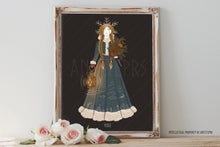

Yule, festival observed historically by Germanic peoples and in modern times primarily by Neo-Pagans, coinciding with the winter solstice (December 21–22 in the Northern Hemisphere; June 20–21 in the Southern Hemisphere). The pre-Christian festival originated in Scandinavia and was later subsumed, along with other pagan celebrations, into the Christian holiday of Christmas. Some modern celebrations of Yule attempt to re-create ancient traditions, while others have been adapted or reimagined to suit contemporary personal and religious practices.
Yule is one of the oldest winter solstice festivals, with origins among the ancient Norse thousands of years ago. Its roots are complicated and difficult to trace, although there are several theories about how and why the festival was celebrated. It is generally agreed that Yule celebrations began as a Norse festival called jol, although assessments of the purpose and traditions vary. Like most winter solstice festivals, themes of light, fire, and feasting are common threads. Some historians think that sacrifices were an important part of the observance, either to the gods and other supernatural beings (such as elves) or to the dead or both. In the harsh climate of northern Europe, most cattle were slaughtered because they could not be fed during the winter. Meat, therefore, was plentiful for a midwinter feast or to leave out as an offering. Some contend that the original festival was a sort of Norse Day of the Dead, with the god Odin as a major player; among Odin’s many names was Jolnir, and among his many duties was acting as a god of the dead. However, this has been disputed in recent years, at least one historian positing that jol was a new year festival intended to set the tone for the months ahead.




